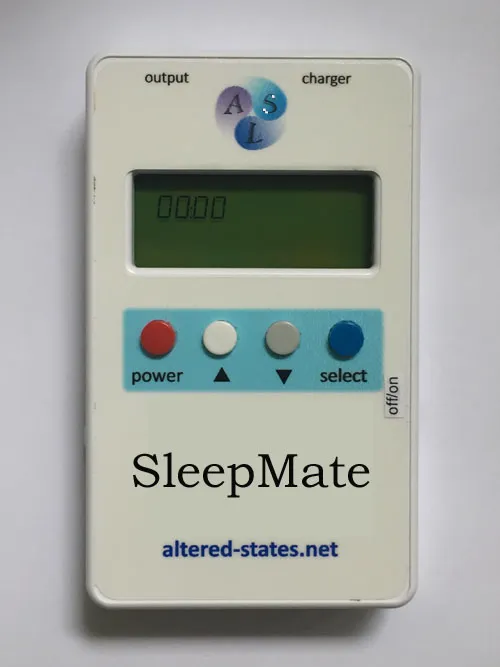|
SLEEP At last, you can put an end to the stress and annoyance of insomnia!
What would you do to feel good and get a better night’s sleep??????? Check this list below and see which applies to you: I often have problems with falling asleep at the right time Difficulty falling
or staying asleep is a common problem. About half of Americans
report sleep difficulty at least occasionally, according to National
Sleep Foundation surveys. Sleep a Brief introduction
Until the 1950s, most people thought of sleep as a passive, dormant part of our daily lives. We now know that our brains are very active during sleep. Moreover, sleep affects our daily functioning and our physical and mental health in many ways that we are just beginning to understand. Nerve-signaling chemicals called neurotransmitters control whether we are asleep or awake by acting on different groups of nerve cells, or neurons, in the brain. Neurons in the brainstem, which connects the brain with the spinal cord, produce neurotransmitters such as serotonin and norepinephrine that keep some parts of the brain active while we are awake. Other neurons at the base of the brain begin signaling when we fall asleep. These neurons appear to "switch off" the signals that keep us awake. Research also suggests that a chemical called adenosine builds up in our blood while we are awake and causes drowsiness. This chemical gradually breaks down while we sleep. During sleep, we usually pass through five phases of sleep: stages 1, 2, 3, 4, and REM (rapid eye movement) sleep. These stages progress in a cycle from stage 1 to REM sleep, then the cycle starts over again with stage 1 (see figure 1). We spend almost 50 percent of our total sleep time in stage 2 sleep, about 20 percent in REM sleep, and the remaining 30 percent in the other stages. Infants, by contrast, spend about half of their sleep time in REM sleep. Sleep research is expanding and attracting more and more attention from scientists. Researchers now know that sleep is an active and dynamic state that greatly influences our waking hours, and they realize that we must understand sleep to fully understand the brain. Innovative techniques, such as brain imaging, can now help researchers understand how different brain regions function during sleep and how different activities and disorders affect sleep. Understanding the factors that affect sleep in health and disease also may lead to revolutionary new therapies for sleep disorders and to ways of overcoming jet lag and the problems associated with shift work. We can expect these and many other benefits from research that will allow us to truly understand sleep’s impact on our lives.
The Stages of Sleep
The background activity of the brain is called the electroencephalogram (EEG) and can be recorded by the use of scalp electrodes. The dominant frequency and amplitude characteristic of the surface EEG varies with states of arousal. A person goes through five stages while going to sleep. Calm wakefulness is accompanied by alpha waves 8-12 Hz (cycles per second) and low voltage fast activity of mixed frequency. This is called stage one. Alpha waves disappear when we open our eyes. As sleep deepens into stage two, bursts of 12-14 Hz (sleep spindles) and high amplitude slow waves appear. The deep sleep of stages three and four is featured by an increasing proportion of high voltage slow activity. Breathing is regular in slow-wave sleep or non-REM (Rapid Eye Movements) sleep. Delta activity (very slow waves, 0.5-4 Hz, high amplitude) is unusual in a normal record and accompanies deep sleep i.e. stages three and four sleep. After about 70 minutes or so mostly spent in stages three and four, the first REM period occurs, usually heralded by an increase in body movements, and a shift in the EEG pattern from stage four to stage two. These rapid low-voltage irregular waves resemble those seen in alert humans; sleep, however, is not interrupted. This is called stage 5 or REM sleep, when the EEG activity gets desynchronised. There is marked muscle atonia despite the rapid eye movements in REM sleep, and the breathing is irregular. Theta activity with a pattern of large regular waves occurs in normal children and is briefly seen in stage one sleep and also in REM sleep. Non-REM (NREM) sleep passes through stages one and two, and spends 60-70 minutes in stages three and four. Sleep then lightens and a REM period follows. This cycle is repeated three or four times per night, at intervals of about 90 minutes throughout the night, depending on the length of sleep. REM sleep occupies 25% of total sleeping time.
When the eyes are opened, the alpha rhythm is replaced by fast irregular low voltage activity with no dominant frequency, called the alpha block. Any form of sensory stimulation or mental concentration such as solving arithmetic problems could produce this break-up of the alpha rhythm. This replacement of the regular alpha rhythm with irregular low voltage activity is called “desynchronisation”.
Sleep Problems At least 40 million Americans each year suffer from chronic, long-term sleep disorders each year, and an additional 20 million experience occasional sleeping problems. These disorders and the resulting sleep deprivation interfere with work, driving, and social activities. They also account for an estimated $16 billion in medical costs each year, while the indirect costs due to lost productivity and other factors are probably much greater. Doctors have described more than 70 sleep disorders, most of which can be managed effectively once they are correctly diagnosed. The most common sleep disorders include insomnia, sleep apnea, restless legs syndrome, and narcolepsy.
Ascending circadian sleepiness: this means going to sleep at a time of day when you usually experience a rapid increase in drowsiness. Not earlier and not later! Knowing the timing of your circadian rhythm is perhaps critical for a good nights sleep.
SLEEP PULSED ELECTROMAGNETIC
FIELDS 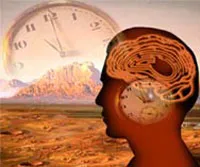
Pulsed electromagnetic therapy (PEMF) has been used with high degrees of success even where other therapies have failed, and without ANY meaningful adverse reactions, for decades world-wide. Numerous studies have been performed, all with acceptable degrees of success in controlling the problems associated with sleep. One recent double-blind, placebo controlled study assessed the efficacy of impulse magnetic-field therapy for insomnia. One hundred patients were randomly assigned to either active treatment or placebo. Seventy percent of the patients given active treatment experienced substantial or even complete relief of their complaints; 24% reported clear improvement; 6% noted a slight improvement. This is simply incredible results!!!! (click here for study details) Pulsed electromagnetic fields for sleep couldn't have come at a better time. Recent sleep research from literally every corner of the world has determined most people don't sleep well, as many as 10% are either diagnosed with or complain of chronic insomnia, and record numbers of young and old are turning to prescription sleep aids. Within the last few weeks it has been determined that even babies and toddlers are not sleeping as well as they used to. Research conducted over previous years for pulsed electromagnetic field therapy indicates that varied improvements in neurological, physiological and psychological actions have been achieved with no adverse reactions. Pulsed electromagnetic field therapy has proven effective in thousands of cases where conventional therapy has failed
Sleep
Therapy was administered 3 times per week, always in late afternoon and for 20 minutes, over a period of 4 weeks. R. Hajdukovic, Effects of Low Energy Emission Therapy (LEET) on Sleep Structure, First World Congress for Electricity and Magnetism in Biology and Medicine, 14-19June 1992, Lake Buena Vista, FL, p. 92. This double-blind, placebo-controlled study examined the effects of low-energy emission therapy (27 MHz amplitude-modulated electromagnetic fields) in patients suffering from insomnia. Treatment consisted of 3 exposures per week over a 4-week period. Results showed significant increases in total sleep time among patients in the treatment group relative to controls. M. Erman, Low-Energy Emission Therapy (LEET) Treatment for somnia," Bioelectromagnetics Society, 13th Annual Meeting, 23-27 June 1991, Salt Lake City, UT, p. 69. This review article notes that studies have found low-energy emission therapy to be effective in the treatment of chronic insomnia, and suggests that it may also be of value for patients suffering from generalized anxiety disorders. C. Guilleminault B. Pasche,Clinical Effects of Low Energy Emission Therapy, Bioelectromagnetics Society, 15th Annual Meeting, 13-17 June 1993, Los Angeles, CA, p. 84.
Turn any bed or lounge chair into a recuperation system for your body. Put it under your pillow-put it in your chair as you relax. That is it. It sounds easy– it is. Not
everyone will have the same results, and we cannot make any
medical claims but the experience of our clients and the results
of clinical studies on PEMF's(click here
for study details) show amazing improvements from 70
to 90 percent of those involved.
The Effects Of Sleep Deprivation A growing number of scientists are discovering that the sleeping brain does something to solidify memories and process newly learned information. With most people routinely getting far less sleep than they should, some experts are starting to wonder if widespread sleep deprivation is having a real but unrecognised effect on society's brainpower and creativity. Recent research is revealing that sleep is essential not only to brain function but to the proper function of every bodily organ. Sleep researchers can point to a whole list of problems and diseases connected to sleep deprivation. A 19-year-old college student with a diagnosis of bipolar disorder (manic-depression) has too much energy to sleep for six nights running and experiences uncontrolled mania.
A 67-year-old man with prostate problems wakes up to go to the bathroom half a dozen times a night, and one morning he has a heart attack. A healthy man of 30 gets half his required sleep - fours hours a night - for a week and ends up in a pre-diabetic state with the metabolism of his grandfather. An 82-year-old woman falls and breaks her hip, maybe for the same reason that a 43-year-old truck driver slams into a barrier at 3a.m. - inattention and slowed response because of partial sleep deprivation. The need for sleep is so strong that without enough of it, people can't even muster enough willpower to stay awake to save their lives. Sleep deprivation can come with a high cost. The message is clear: get your sleep or suffer the
consequences. MEDITATION Meditating does more than just feel good and calm you down, it makes you perform better – and alters the structure of your brain, researchers have found. People who meditate say the practice restores their energy, and some claim they need less sleep as a result. Many studies have reported that the brain works differently during meditation – brainwave patterns change and neuronal firing patterns synchronise. But whether meditation actually brings any of the restorative benefits of sleep has remained largely unexplored. So Bruce O’Hara and colleagues at the University of Kentucky in Lexington, US, decided to investigate. They used a well-established “psychomotor vigilance task”, which has long been used to quantify the effects of sleepiness on mental acuity. The test involves staring at an LCD screen and pressing a button as soon as an image pops up. Typically, people take 200 to 300 milliseconds to respond, but sleep-deprived people take much longer, and sometimes miss the stimulus altogether. Ten volunteers were tested before and after 40 minutes of either sleep, meditation, reading or light conversation, with all subjects trying all conditions. The 40-minute nap was known to improve performance (after an hour or so to recover from grogginess). But what astonished the researchers was that meditation was the only intervention that immediately led to superior performance, despite none of the volunteers being experienced at meditation. “Every single subject showed improvement,” says O’Hara. The improvement was even more dramatic after a night without sleep. But, he admits: “Why it improves performance, we do not know.” The team is now studying experienced meditators, who spend several hours each day in practice. Brain builder They found that meditating actually increases the thickness of the cortex in areas involved in attention and sensory processing, such as the prefrontal cortex and the right anterior insula. “You are exercising it while you meditate, and it gets bigger,” she says. The finding is in line with studies showing that accomplished musicians, athletes and linguists all have thickening in relevant areas of the cortex. It is further evidence, says Lazar, that yogis “aren’t just sitting there doing nothing". The growth of the cortex is not due to the growth of new neurons, she points out, but results from wider blood vessels, more supporting structures such as glia and astrocytes, and increased branching and connections. The new studies were presented at the Society for Neuroscience
annual meeting, in Washington DC, US The single most important activity of your life is to sleep Turn
any bed or lounge chair into a recuperation system for your
body.
MORE SCIENTIFIC INFO
Sheng Wu Yi Xue Gong Cheng Xue Za Zhi. 2004 Apr;21(2):219-24. Related Articles, Links [Study on the influence of simulative EEG modulation magnetic field on the discharge of median raphe nuclei]
Wang M, Li Y, Wang X, Guo M. College of Precision Instrument and Opto-electronics Engineering, Tianjin University, Tianjin 300072, China. In this paper the response characteristic of the nerve fiber to the modulation magnetic field induction is studied by using the method of numeric simulation. It is found that the nerve fiber is sensitive to the low frequency modulated signal but not to the high frequency carrier wave. A simulative EEG signal generator is developed according to the change of EEG rhythm during the sleep. The simulative EEG square wave is modulated by high-frequency magnetic impulse. The modulation magnetic field is coupled into the rabbit's brain to study the influence of magnetic stimulation on the discharge of 5-hydroxytryptamine (5-HT) nerve cell. The experiment results demonstrate that discharge frequency of median raphe nuclei related to sleep changes significantly and the discharge becomes slow, which shows that magnetic stimulation can inhibit electrical activity of 5-HT nerve cell and provide a new way to improve insomnia. PMID: 15143544 [PubMed - indexed for MEDLINE] -------------------------------------------------------------------------------- Sleep. 1996 May;19(4):327-36.
Pasche B, Erman M, Hayduk R, Mitler MM, Reite M, Higgs L, Kuster N, Rossel C, Dafni U, Amato D, Barbault A, Lebet JP. Symtonic USA, Inc., New York, New York 10162, USA. The treatment of chronic psychophysiological insomnia presents a challenge that has not been met using currently available pharmacotherapy. Low energy emission therapy (LEET) has been developed as a potential alternative therapy for this disorder. LEET consists of amplitude-modulated electromagnetic fields delivered intrabuccally by means of an electrically conducting mouthpiece in direct contact with the oral mucosa. The effect of LEET on chronic psychophysiological insomnia was assessed with polysomnography (PSG) and sleep rating forms on a total of 106 patients at two different centers. Active or inactive LEET was administered for 20 minutes in late afternoon three times a week for a total of 12 treatments. Primary efficacy endpoints evaluating the results were changes from baseline in PSG-assessed total sleep time (TST) and sleep latency (SL). Secondary endpoints were changes in sleep efficiency (SE), sleep stages, and reports by the subjects of SL and TST. There was a significant increase in TST as assessed by PSG between baseline and post-treatment values for the active treatment group (76.0 +/- 11.1 minutes, p = 0.0001). The increase for the inactive treatment group was not statistically significant. The TST improvement was significantly greater for the active group when compared to the inactive group (adjusted for baseline TST; p = 0.020. R1 = 0.20). There was a significant decrease in SL as assessed by PSG between baseline and post-treatment values for the active treatment group (-21.6 +/- 5.9 minutes, p = 0.0006), whereas the decrease noted for the inactive treatment group was not statistically significant. The difference in SL decrease between the two treatment groups was marginally significant (adjusted for baseline SL and center, p = 0.068, R2 = 0.60). The number of sleep cycles per night increased by 30% after active treatment (p = 0.0001) but was unchanged following inactive treatment. Subjects did not experience rebound insomnia, and there were no significant side effects. The data presented in this report indicate that LEET administered for 20 minutes three times a week increased TST and reduced SL in chronic psychophysiological insomnia. LEET is safe and well tolerated and it effectively improved the sleep of chronic insomniacs given 12 treatments over a 4-week period by increasing the number of sleep cycles without altering the percentage of the various sleep stages during the night. The therapeutic action of LEET differs from that of currently available drug therapies in that the sleep pattern noted in insomniacs following LEET treatment more closely resembles nocturnal physiological sleep. This novel treatment may offer an attractive alternative therapy for chronic insomnia. PMID: 8776791 [PubMed - indexed for MEDLINE] -------------------------------------------------------------------------------- Bioelectromagnetics. 1994;15(1):67-75.
Reite M, Higgs L, Lebet JP, Barbault A, Rossel C, Kuster N, Dafni U, Amato D, Pasche B. Department of Psychiatry, University of Colorado Health Sciences Center, Denver. The sleep inducing effect of a 15 min treatment with either an active or an inactive Low Energy Emission Therapy (LEET) device emitting amplitude-modulated electromagnetic (EM) fields was investigated in a double-blind cross-over study performed on 52 healthy subjects. All subjects were exposed to both active and inactive LEET treatment sessions, with an interval of at least 1 week between the two sessions. LEET consists of 27.12 MHz amplitude-modulated (sine wave) EM fields emitted intrabuccally by means of an electrically conducting mouthpiece in direct contact with the oral mucosa. The estimated local peak SAR is less than 10 W/kg in the oral mucosa and 0.1 to 100 mW/kg in brain tissue. No appreciable sensation is experienced during treatment, and subjects are therefore unable to tell whether they are receiving an active or an inactive treatment. In this study the active treatment consisted of EM fields intermittently amplitude-modulated (sine wave) at 42.7 Hz for 3 s followed by a pause of 1 s during which no EM fields were emitted. During the inactive treatment no EM fields were emitted. Baseline EEGs were obtained and 15 min post-treatment EEGs were recorded and analyzed according to the Loomis classification. A significant decrease (paired t test) in sleep latency to stage B2 (-1.78 +/- 5.57 min, P = 0.013), and an increase in the total duration of stage B2 (1.15 +/- 2.47 min, P = 0.0008) were observed on active treatment as compared with inactive treatment.(ABSTRACT TRUNCATED AT 250 WORDS) Publication Types: PMID: 8155071 [PubMed - indexed for MEDLINE] -------------------------------------------------------------------------------- Med Pr. 1983;34(1):65-73. Related Articles, Links
[Article in Polish] Lankosz J, Tokarz J, Weselucha P, Ochmanski W, Gzyl E, Barbaro B, Gatarski J, Drozdzewicz L, Kielar I. Forty two workers underwent examinations under clinical conditions. The workers were affected by the magnetic field of intensities ranging between 112-190 Gauss, depending on the workplace. They underwent internal, ophthalmological, psychological, psychiatric and analytical examinations and the health status of those exposed was compared to that of twenty controls. Most subjects, mainly those of long length of employment in e-m fields exposure, exhibited nonspecific abdominal pains, general weakness, insomnia, increased thirst and conjunctivitis. PMID: 6865739 [PubMed - indexed for MEDLINE] --------------------------------------------------------------------------------
Dtsch Med Wochenschr 2002 Apr 19;127(16):872 J Neuropsychiatry Clin Neurosci. 2002 Summer;14(3):270-6. Crit Rev Biomed Eng. 2001;29(1):125-33 Clin Neurophysiol. 2000 Nov;111(11):1936-41. Med Hypotheses 2000 Apr;54(4):630-3 J Sleep Res. 1999 Mar;8(1):77-81. Int J Neurosci. 1991 Aug;59(4):259-62. Sleep. 1996 May;19(4):327-36. Wang M, Li Y, Wang X, Guo M. Related Articles, Links
|
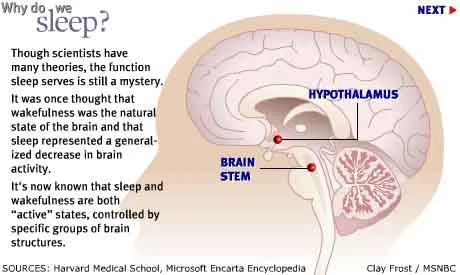
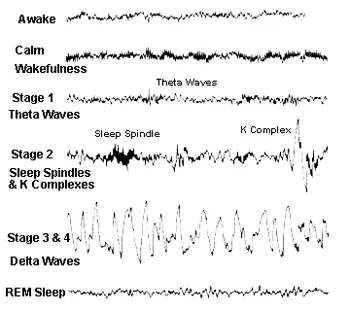
 Your
cause of insomnia could be attributed to a number of different
sleep problems. Researchers are still learning about the
functions of sleep, how we fall asleep, what happens while
we sleep and how we wake up. Sleep will remain a mystery
to science for many more years which is why there is no
one-size-fits-all solution for every insomnia sleep problem.
Your
cause of insomnia could be attributed to a number of different
sleep problems. Researchers are still learning about the
functions of sleep, how we fall asleep, what happens while
we sleep and how we wake up. Sleep will remain a mystery
to science for many more years which is why there is no
one-size-fits-all solution for every insomnia sleep problem.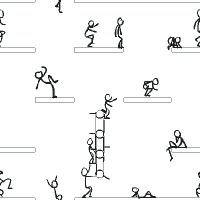 Results
of this double-blind, placebo-controlled study indicated that
low-energy-emission therapy(PEMF) significantly improved sleeping
patterns among patients suffering from chronic psychophysiological
insomnia.
Results
of this double-blind, placebo-controlled study indicated that
low-energy-emission therapy(PEMF) significantly improved sleeping
patterns among patients suffering from chronic psychophysiological
insomnia. 